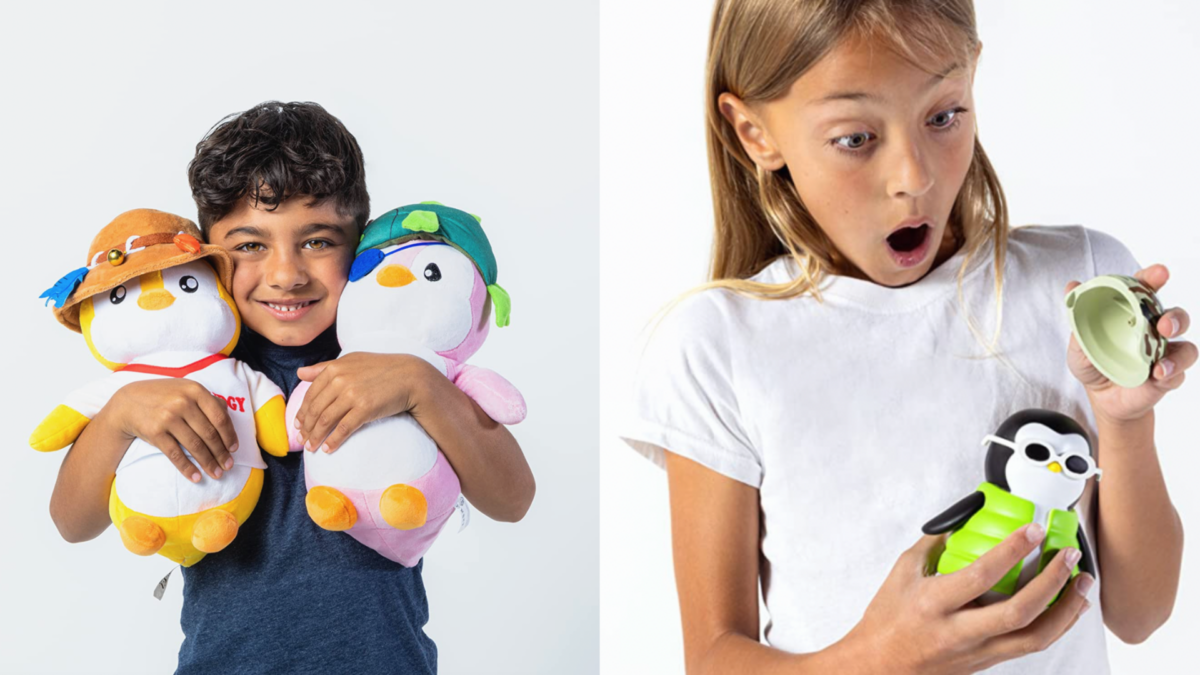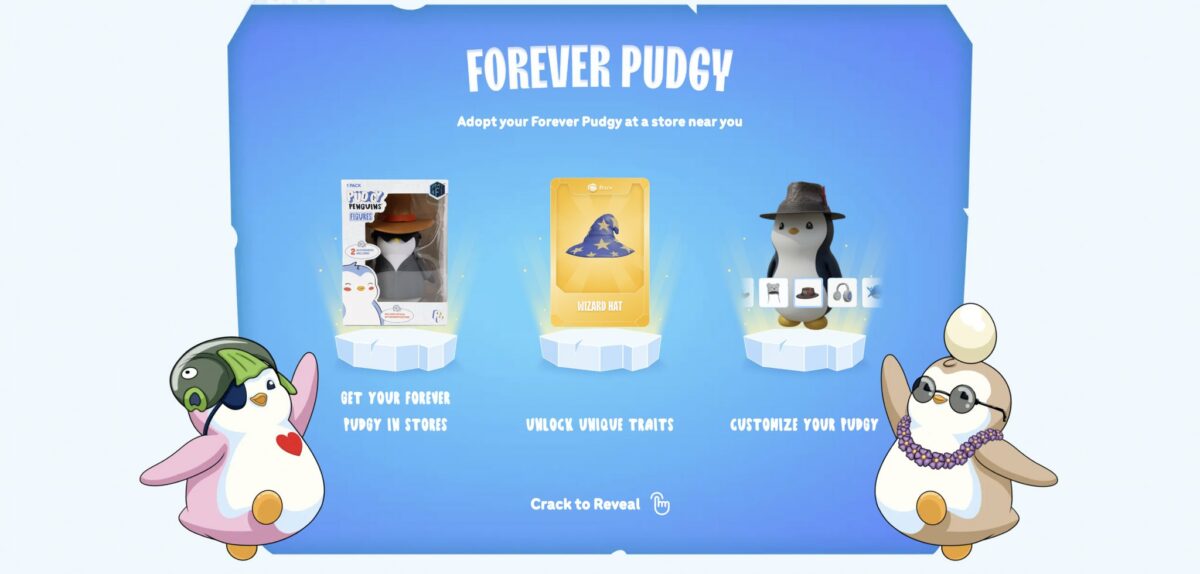NFTs Need to “Shift Away From Ponzinomics”

Luca Netz isn’t afraid to call his shots.
Fresh off the headline-grabbing success of the Pudgy Toys launch, which raised more than $500,000 in two days, the Pudgy Penguins CEO has his sights set well beyond simply dominating the Amazon toy charts.
“When we talk next, I will be the face of NFTs, and I’ll be on the path to being the number one NFT project in the world with the highest floor price,” he says. “That’s really my objective.”
While still an ambitious assertion today, it would have sounded farfetched just a year ago when Pudgy Penguins was reeling from a scandal that drained the treasury and tanked the floor price. The project’s subsequent revival has been one of the most impressive comeback stories the NFT space has seen.
In a candid interview, Netz details the highs and lows of bringing Pudgy Penguins back from the brink, his plan to dominate Web3 IP licensing, and why Pudgy Toys is a Trojan horse for mass adoption.
Matt Medved: Take us back to April 2022. The Pudgy Penguins project really seemed dead in the water. What was it that appealed to you and gave you the conviction to purchase it for 750 ETH? ($2.5 million at the time)
Luca Netz: I was frustrated with NFTs. I was disappointed because of how much money people had raised from the community and venture and how little output they delivered. Everybody was honing in on keywords like they’re the next IP, the next great game, or the next great innovator in music. And it seemed like nobody was doing anything. Rather than complaining, I said, “This is a perfect opportunity to lead the charge in an NFT project that I ultimately believe is the future of technology and collecting.”
750 ETH for @Pudgy_Penguins by the NFT degenerates. Make your move @ColeThereum
— Luca Netz 🐧 (@LucaNetz) January 6, 2022
I bought it for $2.5 million, but you can’t really fundraise and say, “Hey, I’m going to do an NFT project, raise a hundred million bucks, and curate and cultivate that community.” You either have it or don’t. In this situation, I was fortunate enough to buy it. But these things matter in crypto and its historical significance and what it did to really kick off the space. That run in the summer of 2021 set the tone for a craze that ultimately has led us here. And you can’t just buy that. That is unquantifiable marketing dollars and cache and provenance and significance.
So you look at my skill set as an elite product mover and an elite marketer alongside what is in my opinion the best Penguin IP ever made. They’ve always made Penguins ugly for some reason, and Pudgy Penguins are adorable… so you have this traditional IP that fills a necessary void because right now, there is no premier Penguin brand… It has all the ingredients to be successful traditionally, which excites me. It’s the premier case study for building a brand in NFTs, Web3’s first real brand, and first real IP business. And that’s ultimately what we want to create.

There was a lot of excitement when you took over Pudgy Penguins, but there’s definitely a quick shelf life to that in Web3. Holders want results. What were the biggest challenges that you faced in turning this thing around?
The hard part for us was really these black swans that the universe dealt us. At one point I actually had to dig into the bank account and put more money into the business, more than the actual purchase. Because even our worst projections didn’t account for NFT volume getting cut 95 percent. We didn’t account for royalties leaving. And we didn’t account for Ethereum taking an 80 percent haircut — all at the same time.
I knew royalties were not the revenue drivers for this business. Royalties are EBITDA patterns, so that’s how I look at them from a revenue model. But I thought royalties could sustain us up until we got our real revenue drivers going. 80 percent of the team didn’t get paid for 11 months. That comes with internal friction and expectations… I’m thankful they stuck through, and we were able to make it on the other side.
I don’t think we could’ve justified buying @pudgypenguins for $2.5M if we didn’t have the safety net of royalties. We bought the project with no money in the bank, and we knew royalties could sustain us until we got our consumer product line and content verticals going.
— Luca Netz 🐧 (@LucaNetz) February 18, 2023
Was there a moment when you felt the pendulum swing?
I’ll attribute this to my best friend in the space. His name is Frank Degods. He gave me a coaching lesson one day where he said he was so impressed with what we were doing, but I wasn’t doing a good job galvanizing and spreading that vision, which is really my job as a CEO. And within those first couple of days of him telling me that started the uptrend for Pudgy Penguins, which was being a little more vocal.
In Web2, I never really talked about my successes. I just showed them. I let the results do the talking. That was always my mantra because I grew up in LA, and everybody in LA is either lying or a trust fund baby. I’m a doer. But he showed me that it’s a combination of both, the talking and the doing. So all I had to do was muster up the courage because I’m an introvert. That was a huge moment because many people in this space create amazing things but fall on deaf ears because they don’t have a champion of those products.
Much of Web3 focuses on Twitter, but Pudgy Penguins has been growing fast on Instagram and beyond. How do you think about different platforms for getting this IP in front of a wider audience?
We have to control our own destiny… If I keep my eggs in one basket, I’m inevitably compromising my future, this company’s future, and our holders…. Being subjugated to variables I can’t control is a fool’s game. And I have no interest in playing a fool’s game. I have every interest in playing a wise man’s game, and a wise man would diversify his attention.
In the next year, I want to have the biggest Facebook, YouTube, TikTok, Instagram, Snapchat, and GIPHY of anybody in the Web3 space. After we do that in a year, we go and tackle the traditional IPs.

What’s the vision behind Pudgy Toys? How did you take it from idea to fully realized success?
On its face, to the regular person, it’s a cute, cuddly, Pudgy Penguin. But to the Web3 world, it’s a Trojan horse for getting people into Web3 without them knowing. There’s a birth certificate attached to it with a QR code. You scan it, and it gives you a redemption code and points you to pudgyworld.com. You sign up for an account via email and a password, which gives you a custody wallet. Within a few minutes, you can buy and sell NFTs and put them on your forever Pudgy Penguin in real-time. If you decide to mint it, it’s a dynamic soul-bound NFT. So the actual Penguin itself is additive to our core collection, not dilutive. To have a tradable Pudgy Penguin asset, you must go to Ethereum and spend big dollars. But it still makes people comfortable with that digital identity and a part of the community.

If you want to introduce a friend or family member to the space, right now, you’ll have teach them about MetaMask and OpenSea, which sounds rigorous and time-consuming. Now with Pudgy Toys, all you have to do is buy them an action figure and follow the instructions. Within five minutes, they’ll understand the beauty of Web3.
Now if you spend an extra 10 minutes on Pudgy World and you go and sell a trait, there’s been some amazing anecdotes up to this point of people spending $60 worth of toys and selling $230 worth of digital trades. Making that mechanism sticky is the hard part here and we’re working hard to create that feedback loop to ensure that it’s fun and engaging. But a world where somebody spends $20 on a toy and makes $30 back is a world where everyone goes, “Holy shit, what is this?” They’ll ultimately learn that it’s an NFT and the likelihood of them becoming a Web3 consumer is very high.
“The elephant in the room today is NFT holders want monetary gain.”
Luca Netz
In a post-royalty world, how do you think community-based projects can sustainably create these new revenue streams while still also driving value back to their holders?
The elephant in the room today is NFT holders want monetary gain. Most founders don’t want to talk about it… but I understand because I was an NFT collector. I know what they want. They want monetary gain. And how are you going to give them monetary gain today? Well, today it’s through airdrops of tokens and NFTs, which are liabilities. The best advice I got coming into this business was to avoid creating liabilities for yourself. So I have too many collections. I bought Pudgy Penguins with Lil Pudgys and Pudgy Rods already existing. So I have no room to create more NFTs today. And tokens are pretty far out because I don’t think my NFT market cap has justified and warranted a token airdrop.

So ultimately, I can’t give monetary gain by creating imaginary items out of thin air and dropping them. So the only way I can give monetary gain right now is through the floor price going up, which I also can’t control outside of me just executing and showing up every day. The only other option is to create a real business and share that revenue… through licensing because [holders] own their digital asset. As the company, I will license that IP from them and use it in the products and tools that I make, and that’s a scalable way of monetary gain. If we really want this space to work, we will have to shift away from Ponzinomics. We will have to shift away from creating things out of thin air. They’re nice and I’m sure I’ll do them at some point. But that cannot be the all-in-be-all. That just has to be a feature.
“If we really want this space to work, we will have to shift away from Ponzinomics.”
Luca Netz
How does IP licensing work? How do you plan to scale it with the expansion of Pudgy IP?
Right now, the toys use a licensing royalty, where they get paid in perpetuity on an annual basis. So at the end of every year, we’ll consolidate the toy skews’ revenue, and we’ll pay them out accordingly. Moving forward, we’ll probably do it through non-exclusive upfront payments. So I will pay you for the non-exclusive right to use your Pudgy Penguin and an upfront payment on what the deal is worth. And I’m just going to send that directly to your wallet.

We developed a platform called Overpass, which we’ll release at the end of June, maybe the beginning of July… [that] solves Web3 licensing at scale…. Licensing is the lowest hanging fruit in terms of utility projects can provide their holders, and Web3 licensing today is a pain in the ass. I learned it because we were the first major Web3 company to license IP directly from holders for a mass-market product… Web3 licensing should be done the Web3 way, which is a couple of clicks of a button. Web3 extracts much of the friction, and it has yet to be abstracted for the licensing business. So we made this licensing marketplace where if you’re a company and you want to license IP, you make a deal. You issue the collections you want on board, and they will submit proposals of their character and what they want paid for it. With a couple of clicks of a button, they can send the money and sign the paperwork. It’s all done on-chain… I humbly think it’s one of the three most important pieces of technology that any NFT project has ever shipped.
This interview transcript has been edited for concision and clarity.
For the full and uncut interview, listen to our podcast episode with Luca Netz.





